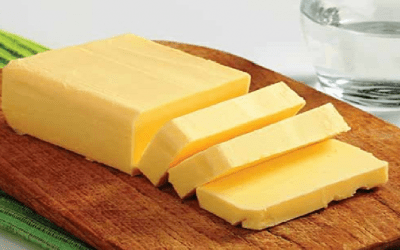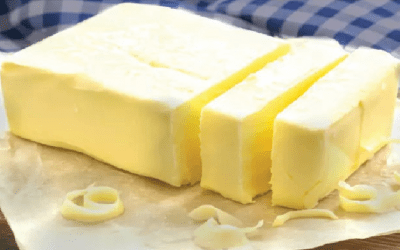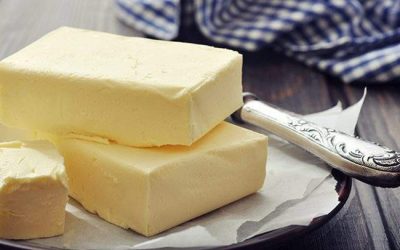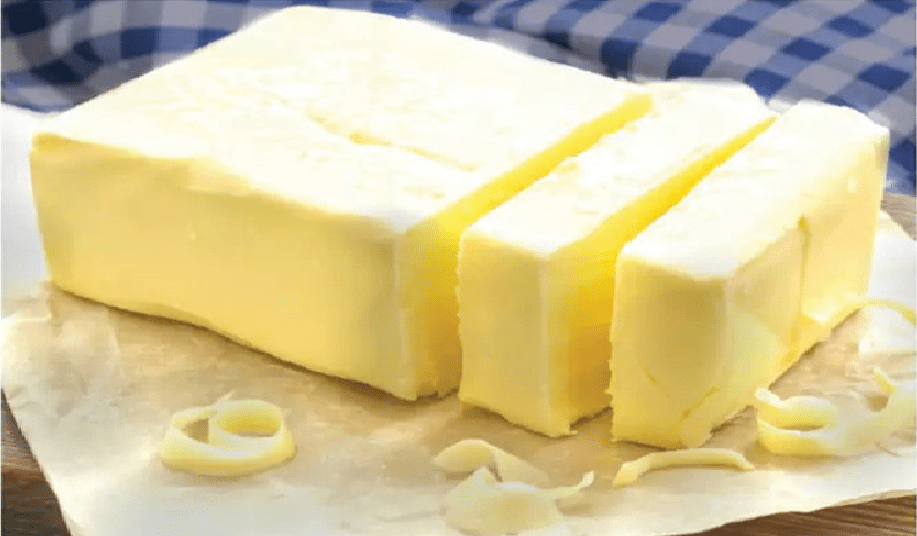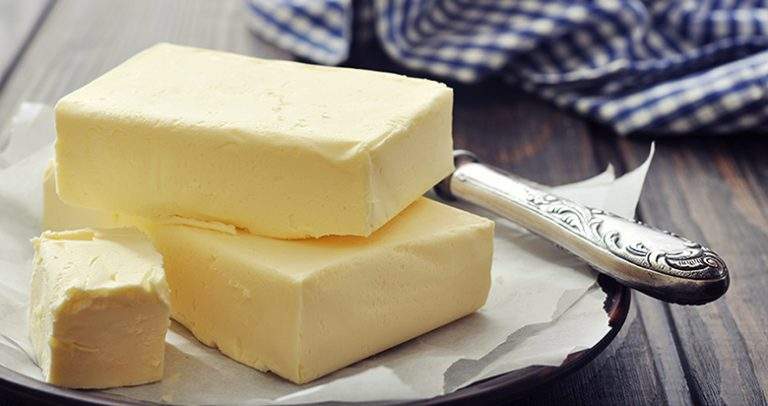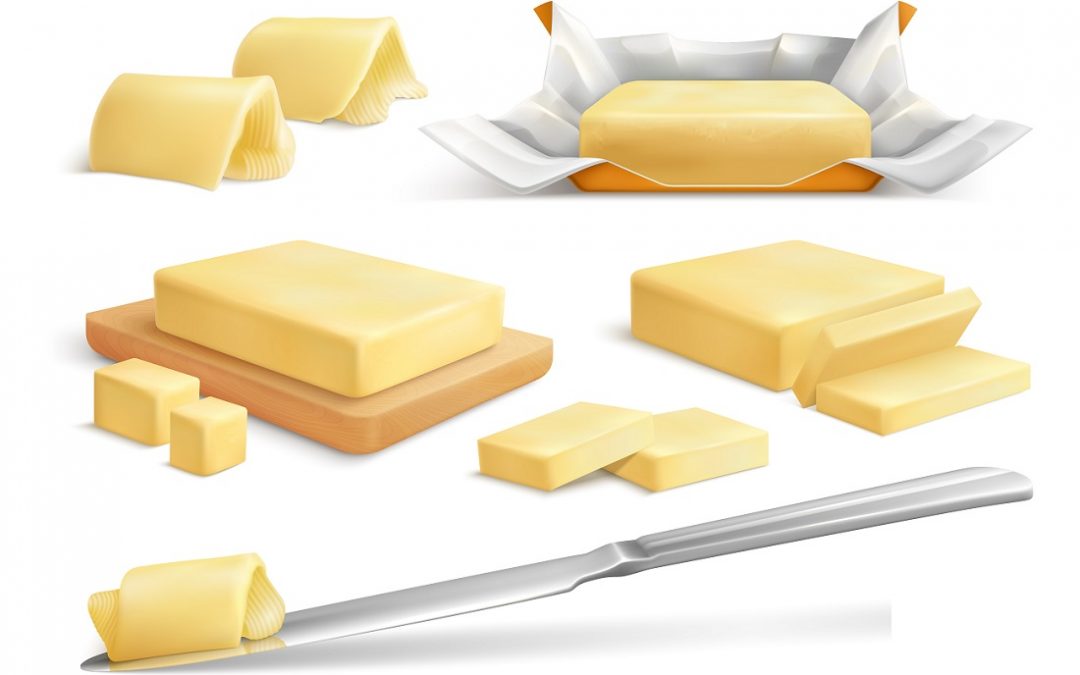Nutritionally speaking, your table butter has roughly 80 per cent milk fat (mostly saturated), 12 to 16 per cent water, 2 per cent nonfat milk...
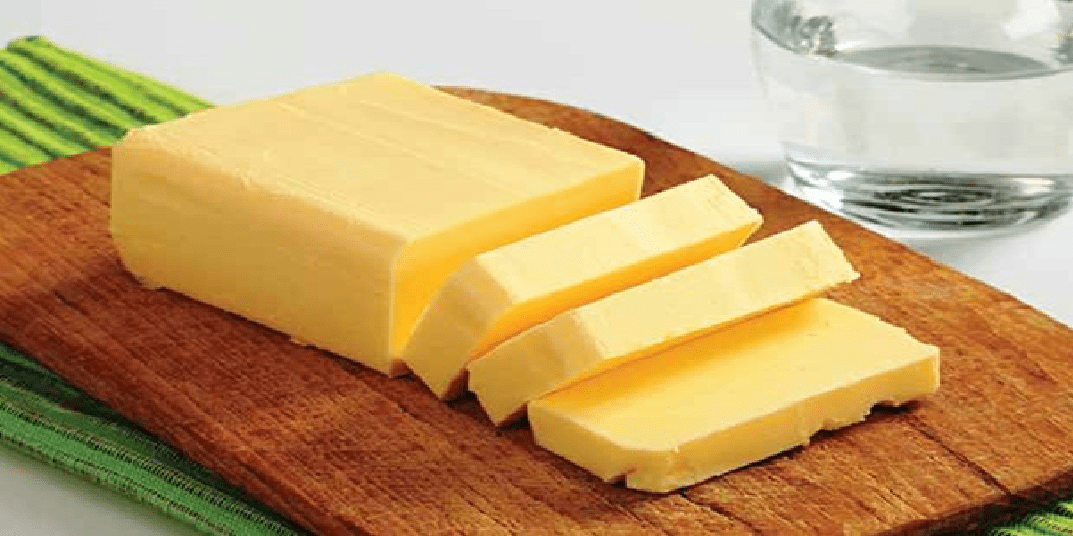
Table Butter-More milk fat, less salt – that’s how it should be
Table Butter-More milk fat, less salt – that’s how it should be

How We Test
The brand samples of eight table butter brands have been tested following the FSSAI requirements and BIS standard IS: 13690 specifications for pasteurised butter. Consumer VOICE tested the eight regular selling brands on a range of quality, safety and acceptability parameters. These included milk fat, milk solids not fat, curd, moisture, acidity and common salt. The brands have been further tested to qualify adulteration, microbiological and sensory tests. We followed the standard test methods at a NABL-accredited laboratory.BRANDS TESTED
| Rank | Total Score out of 100 (rounded off) | Brand | MRP (Rs) | Net Weight (gm) | Price (Rs) per 100 gm | Best before (months) | Manufactured/Marketed by |
|---|---|---|---|---|---|---|---|
| 1 | 93 | Vita | 44 | 100 | 44 | 12 | The Rohtak Co-Op Milk Producers Union Ltd |
| 2 | 91 | Verka | 46 | 100 | 46 | 8 | The Punjab State Co- Operative Milk Producers Federation Ltd |
| 3 | 89 | DMS | 210 | 500 | 42 | 12 | Delhi Milk Scheme |
| 4 | 87 | Mother Dairy | 46 | 100 | 46 | 12 | Mother Dairy Fruits & Vegetable Pvt. Ltd |
| 4 | 87 | Gowardhan | 80 | 200 | 40 | 12 | Parag Milk Foods Pvt. Ltd |
| 5 | 86 | Amul | 46 | 100 | 46 | 12 | Gujarat Cooperative Milk Marketing Federation Ltd |
| 6 | 84 | Paras | 225 | 500 | 45 | 12 | VRS Foods Pvt. Ltd |
CV Recommendations
Top Performer
Vita
Value for Money Brand
DMS
Key findings
• Based on the overall test findings, Vita is the top performer and is followed by Verka and DMS. • Based on the overall test findings, Vita is the top performer and is followed by Verka and DMS. • The value-for-money brand is DMS.• Vita and Verka had the highest fat content. • DMS and Vita had lowest amounts of SNF (solids not fat). • Moisture was lowest in Vita and Verka. • All the brands met all requirements specified in the Food Safety & Standards Regulations. • All brands cleared the tests for microbiological safety and are therefore safe for consumption. • In sensory panel tests, Amul is the top performer and is followed by Mother Dairy and Vita.What is butter?
Butter is the smooth, fatty substance obtained from churning cream. Butter manufacturers first pasteurise the cream. This heat treatment destroys bacteria, inactivates enzymes, and gives the cream a cooked or heated flavour.What is table butter?
Table butter is the product made from pasteurized cream obtained from milk and milk products, with or without ripening with the use of standard lactic culture, addition of common salt, annatto or carotene as colouring matter, and diacetyl as flavouring agent.What is white butter?
White butter is the product made from pasteurized cream obtained from milk and milk products, without ripening and without addition of any preservative including common salt, any added colouring matter, or any added flavouring agent.Milk Fat
As per the national standards, the minimum requirement for milk fat in table butter is 80 per cent. As per the national standards, the minimum requirement for milk fat in table butter is 80 per cent. • Fat percentage was above the minimum requirement in all brands. • Vita and Verka (83.9 per cent each) had the highest fat content, followed by DMS (82.8 per cent).Milk solids not fat (SNF)
SNF in table butter shall be a maximum two per cent as per FSS Regulations.SNF in table butter shall be a maximum two per cent as per FSS Regulations. • SNF was found within the permissible limit (0.4 per cent to 1.4 per cent) in all brands. • DMS (0.4 per cent) had lowest amount of SNF and therefore scored highest. It was followed by Vita (0.7 per cent).Curd
Curd shall be a maximum 1.0 per cent as per Indian Standard and 1.5 per cent as per AGMARK.Curd shall be a maximum 1.0 per cent as per Indian Standard and 1.5 per cent as per AGMARK. • Curd was highest in Amul and Paras (both 1.3 per cent) and lowest in DMS (0.4 per cent) and Vita (0.7 per cent).- Reichert-Meissl (RM) value of extracted fat
- All tested brands met the requirement set by FSS
- Butyro-refractometer (BR) reading of extracted fat
- All brands were within the specified limits set by FSS
Moisture
The maximum permissible limit for moisture in table butter is 16 per cent.The maximum permissible limit for moisture in table butter is 16 per cent. • Moisture in all brands was within specified limit. • Vita (13.7 per cent) and Verka (13.8 per cent) had the lowest amounts of moisture. This is good for consumers.Acidity
Acidity shall be a maximum 0.15 per cent as per Indian Standards. • All brands were found within the specified limit.Common salt
Salt should be a maximum three per cent in table butter as per FSS Regulations. • All the brands had salt and tasted salty. Salt was found lowest in Verka (1.5 per cent) and highest in Mother Dairy (2.1 per cent).PHYSICOCHEMICAL SCORES
| Parameter | Weightage (%) | Vita | Verka | DMS | Mother Dairy | Gowardhan | Amul | Paras |
|---|---|---|---|---|---|---|---|---|
| Milk fat | 30 | 27.36 | 27.36 | 24.72 | 23.52 | 23.28 | 23.76 | 22.80 |
| Milk solids not fat | 8 | 7.04 | 6.80 | 7.76 | 6.80 | 6.80 | 5.60 | 5.36 |
| Curd | 6 | 5.52 | 5.28 | 6.00 | 4.80 | 4.80 | 3.84 | 3.84 |
| Reichert Meissl value of extracted fat | 6 | 6.00 | 4.80 | 5.70 | 5.55 | 5.70 | 5.40 | 5.52 |
| Butyro-refractometer reading of extracted fat | 6 | 5.52 | 5.10 | 5.22 | 5.64 | 5.70 | 5.82 | 5.70 |
| Moisture | 5 | 4.15 | 4.10 | 3.55 | 3.60 | 3.50 | 3.85 | 3.50 |
| Acidity (as lactic acid) | 4 | 3.68 | 3.36 | 3.84 | 3.68 | 3.84 | 3.68 | 3.84 |
| Common salt as NaCI | 3 | 2.58 | 2.70 | 2.46 | 2.34 | 2.40 | 2.40 | 2.64 |
Microbiological activity in your butter
Microbiological activity in your butterMicrobiological contamination is a serious issue for milk and milk products. Microorganisms are responsible for many food-borne diseases. We conducted tests as per FSS Regulations, for yeast and mould count, aerobic plate count, coliform count, E. coli, S. aureus, Salmonella and Listeria monocytogenes. • All the brands passed in these tests.FOR SENSORY ATTRIBUTES
The samples were judged by an expert panel on these attributes: a) colour, b) appearance, c) flavour,d) body and texture, and e) packaging. The test guidelines were as prescribed in Indian Standard 7769-1975. • Amul was the top performer and was followed by Mother Dairy and Vita.• DMS scored lowest. • Amul was rated best on flavour.| Brand | Score out of 12 |
|---|---|
| Amul | 11.76 |
| Mother Dairy | 11.54 |
| Vita | 11.39 |
| Verka | 11.32 |
| Paras | 11.16 |
| Gowardhan | 11.08 |
| DMS | 10.46 |
Packing and Marking
Packing should be proper because it protects the product from deterioration and increases its shelf life. Each pack should also carry information about the characteristics of the product and/or the claims of the manufacturer. The samples were verified against the marking requirements as given in the relevant Indian Standards. • Except DMS, all brands were wrapped in printed butter paper and packed in hard paper box. DMS was wrapped in butter paper only. • DMS did not carry the green dot and customer- care details. • Net weight was found to be above the declared quantity in all the brands. • Amul and Vita had AGMARK.Table Butter-More milk fat, less salt – that’s how it should be
Table Butter: Know the Best brand to choose from
Often, we choose products on the basis of various claims and advertisements being dispersed. However, there are conscious consumers too who contest...
Salted or Unsalted Butter: Which Should I Use When?
The clear difference between salted and unsalted butter is the presence of salt. Mostly unsalted butter is made with 100% cream, salted butter will...

